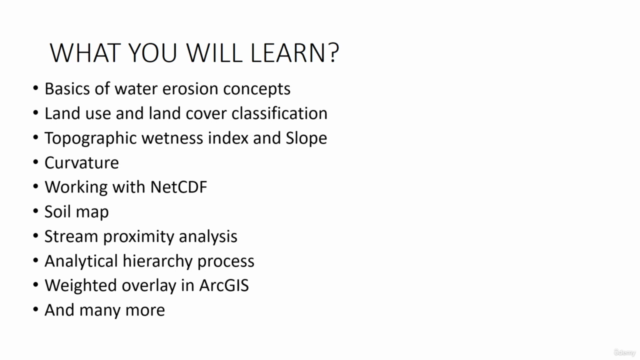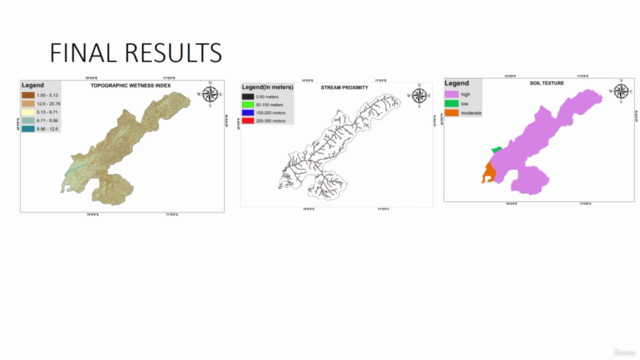Spatial mapping of water erosion with MCDA tool in ArcGIS
Using Analitical Hierarchy Process (AHP)
4.29 (19 reviews)

118
students
5.5 hours
content
Feb 2022
last update
$49.99
regular price
What you will learn
Analytical Hierarchy Process
Land cover classification
Working with CRU precipitation NetCDF model
Euclidean distance
Soil texture
Curvature
Topographic wetness index (TWI)
Slope
Hydrologic analysis (flow accumulation and flow direction)
Model Builder
Mosaic raster
Screenshots




Related Topics
4523374
udemy ID
1/30/2022
course created date
2/24/2022
course indexed date
Bot
course submited by